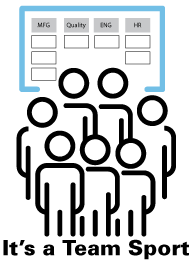Be among the first to get the latest insights from LEI’s Lean Product and Process Development (LPPD) thought leaders and practitioners. Subscribe to The Design Brief, LEI’s newsletter devoted to improving organizations’ innovation capability.

Read a Post and watch a video introducing the six guiding principles.
Imagine a team whose members look and think alike. They read the same books. They live in the same neighborhoods. From afar, chances are you might see this team working in untroubled collaboration and harmony. However, with a closer look, you’ll discover a dangerous homogeneity that glorifies consent and buries true creativity.
Product development is a team sport. Yet, like in any sport, not all teams succeed. The very best teams are those driven by passion and inspired by the belief that there’s always a better way. Team members have deep domain knowledge and are interested in learning, contributing, and getting work done. They need to be the best listeners, enjoy the creative crashes, and be willing to have their own beliefs challenged.
The best teams attract, promote, and celebrate diversity of thought, enabling team members to approach problems differently. I’ve worked with plenty of teams throughout my career, and the ones that deliver best are always the ones where the different personalities dance and fight in passionate, thought-provoking rooms. An obeya room filled with this can be magical. Now, as a CEO, I see the importance of not only promoting diversity within our teams but also opening them to a broader range of input—particularly coming from passionate people with personal interest in the product.
Today’s new challenge or opportunity is integrating our communities and consumers into product development. Can we make them integral members of our team? Just like inviting fans to join their favorite sports team on the field. It sounds messy, but this could be the connection to the most powerful creative process we’ve seen.
The key to all this, of course, comes from leadership and orchestration. Like a coach, the best program managers are a special kind of problem-solvers who inspire and lead their teams to solve the complex issues. Looking back, Thomas Edison and Henry Ford come to mind. They had a passion and a love for problems at hand, tirelessly working with their teams to answer the questions that emerged every step of the way. The program management roles are very stressful and demanding, requiring mental toughness, flexibility, skills to manage people, the discipline to drive process, and an openness to embrace multidisciplinary discussions.
Through the effective execution of the Lean Product and Process Development Principles, tools and methods, I’m convinced there will be obeya rooms the size of our cities, energizing and empowering diverse teams to develop products we haven’t even imagined yet.
Designing the Future
An Introduction to Lean Product and Process Development.



